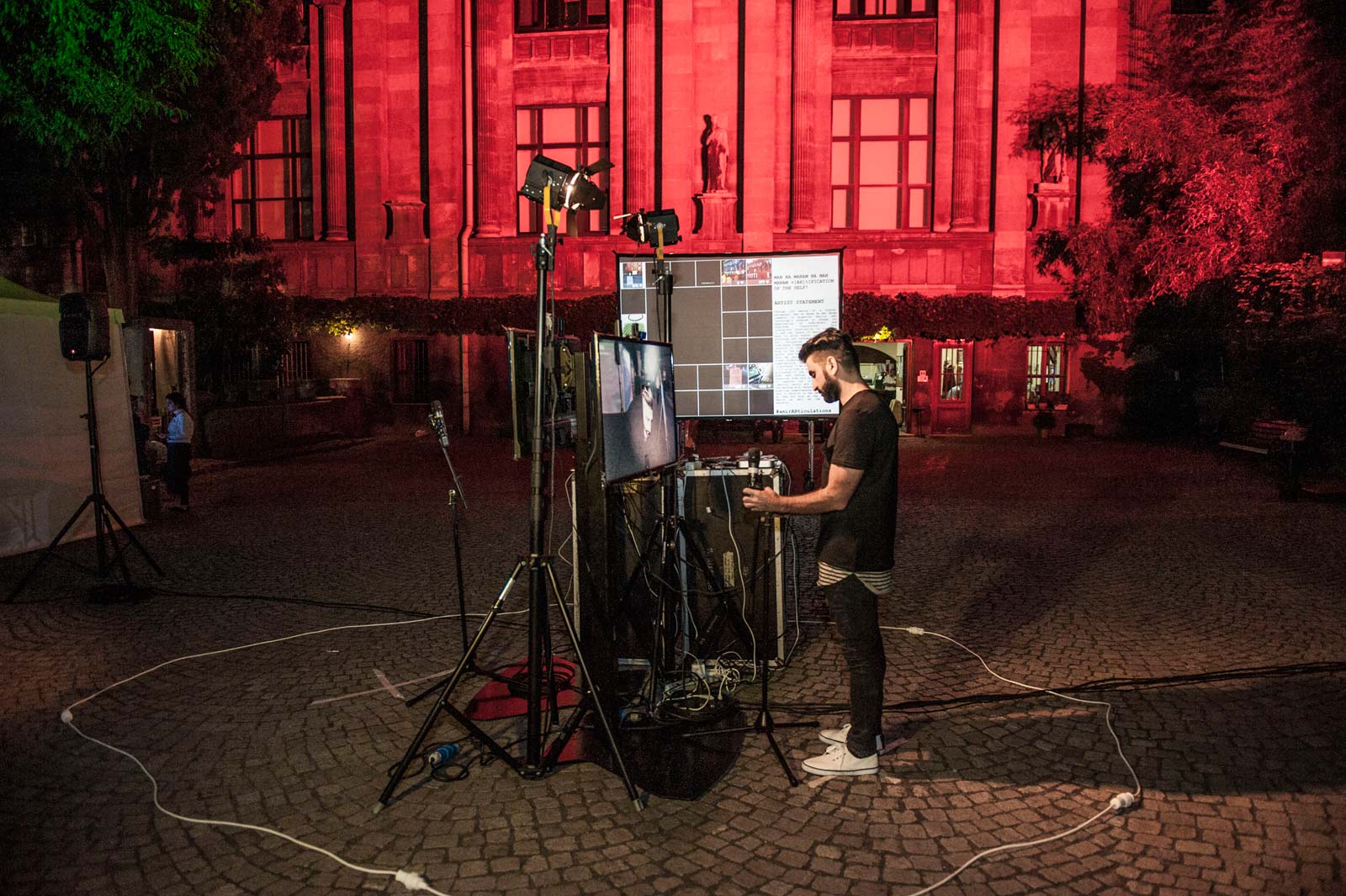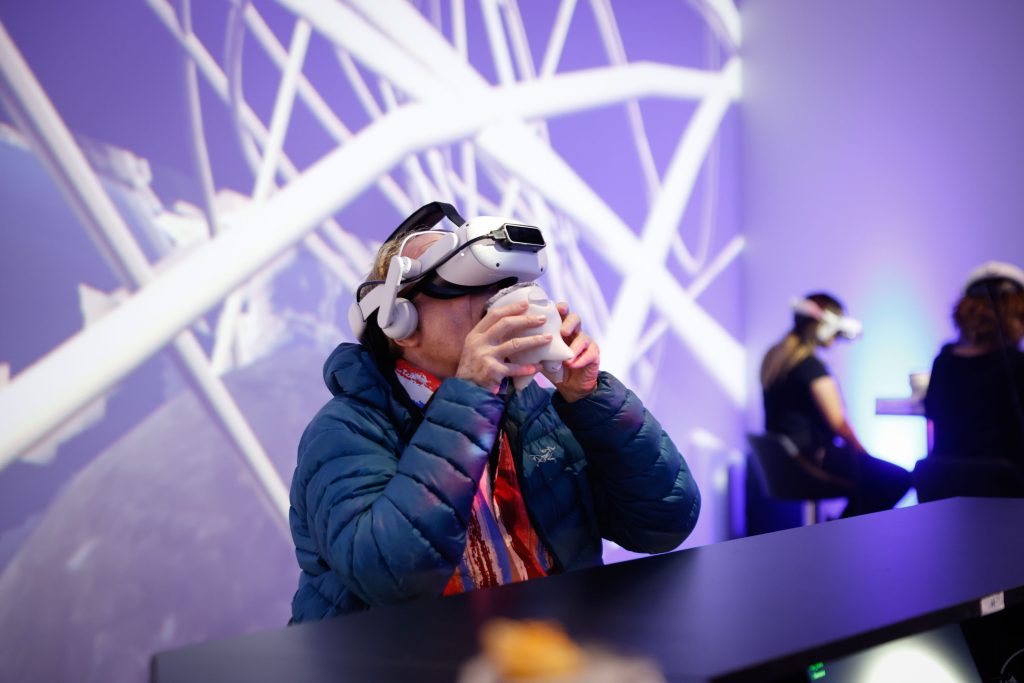Pulse Miami Beach 2015: Amir Baradaran’s Augmented Reality Experience
Shattering one’s own face while singing Sufi poetry at the contemporary art fair

We’re a few weeks out from Miami Art Week and conversations over the multiple, concurrent art fairs and unprecedented displays of art included have already commenced. With virtual reality and augmented reality ever-emerging areas in the art world, we were quick to take note of the announcement that Amir Baradaran would be showcasing a new piece at this year’s PULSE Contemporary Art Fair. A visionary instigator as much as a performance artist, Baradaran has already drawn acclaim for an unofficial “art intervention” involving the Mona Lisa at the Louvre and for infiltrating Marina Abramovic’s MoMA stare down. For the last decade, however, the New York-based Iranian-Canadian artist has been focusing on developments in augmented reality and “Man Na Manam + {AR}Ticulations of the Self!” utilizes it full force. It’s something worth seeing at PULSE.

A quick overview of the piece, which was tested out in Istanbul on 9 September 2015, explains what one can expect—though not the sensations it elicits. “Man Na Manam + {AR}Ticulations of the Self!” features two back to back digital monitors; Baradaran stands in front of one, while a participant (anyone at the fair can take a turn) steps in front of the other. Facial- and movement-recognition technology is activated and as soon as both people smile, a code reads the smile and the experience commences. Each respective screen reveals the face of the person standing before it and when the artist and participant begin to sing a verse by 13th century Sufi poet Rumi, one’s face undergoes changes—shattering and becoming filled with the face of the other. If it sounds jarring, that’s because it is, but it’s also exhilarating with a valid challenge-by-choice angle.
We live in this era that’s become more and more augmented, while our vision is being digitalized. Artificial intelligence helps us make decisions.
“I ask myself, ‘How can we think about AR as a new medium for artists’ creation?’ and not only for didactic purposes,” Baradaran shares with CH. “Mainly, we have to rethink of it as a way of shifting how we perceive art and how we interact with our bodies and how our bodies interact with objects. This is what it’s about: body to body interactions, body to machine and body to object. These three parts. We live in this era that’s become more and more augmented, while our vision is being digitalized. Artificial intelligence helps us make decisions.” With this piece, Baradaran turns this lens upon the self.

For the reality element of his AR piece, there are two fundamental components: Baradaran and the participant. He believes, and his demo attested to the fact, people will participate. “I did a beta version of this piece in Istanbul for a conference on communication. They asked me to present a piece to them at the Istanbul Archaeology Museums on the innovations of the future and the present. It was exciting to see how, surprisingly, people allow themselves to participate and sing. This goes to the whole notion of co-creativity. When you are a performance artist, we often forget that creation happens on many folds; one of that is the presence, moreover engaged presence, of the body of the audience member,” he explains.

Singing has a way of making people feel self conscious, whereas smiling alone doesn’t necessarily. Once having activated the experience, Baradaran believes users will continue, though admits that even staring back emptily or laughing or ignoring it all together is still part of the performance. And of course, there’s Baradaran’s presence lending its own impact. “As performance artists,” he continues, “we use our body as a means of articulating. With augmented reality there are new lexicons I have tried to bring to the secular interpretation of performance art. Many think about performance art as a temporary marriage. I engage the audience in a corporeal way. I want to be present to think about that moment of contract between two bodies coming together in relation to this space.”

“I’ve been contemplating ideas around body and machine for many years now. I do speak to that,” he concludes. “This is basically part of the larger investigation around technology and materiality, and on how we conceive a piece around performance and our bodies.” It’s an immersive study, while also being playful. Baradaran does explore ownership of an experience, here. And thankfully notes that the machine will even read when people sing in a very little voice, because, ultimately, who wouldn’t want to see their face shatter and be filled with someone else doing the same thing just two devices away?

PULSE invited Baradaran to present “Man Na Manam + {AR}Ticulations of the Self!” as part of the fair’s PROJECTS platform and the piece was developed thanks to a grant from the Canada Council of the Arts. Intel was also a key collaborator, allowing Baradaran access to coding and equipment, including depth and color sensors from their Real Sense System. And to round out key collaborators (including Diana Saez, Reality Arkitekts Inc, Devigners’ Guild members Jorge Barrios, Armando León, Javier Muñoz, MYND Workshop’s Michael Robison and Christopher E. Scott), the artist worked with a series of coders he refers to as his poets.
PULSE Contemporary Art Fair will run from 1-5 December 2015 at Indian Beach Park, 4601 Collins Ave, Miami Beach, FL.
Istanbul photos courtesy of the artist, photos by Pinar Lauridsen












